
The autonomic nervous system is the part of the nervous system that
The nervous system has two main parts: Central nervous system (CNS) : Your brain and spinal cord make up your CNS. Your brain reads signals from your nerves to regulate how you think, move and feel. Peripheral nervous system (PNS): Your PNS is made up of a network of nerves. The nerves branch out from your spinal cord.

Nervous System
nervous system, organized group of cells specialized for the conduction of electrochemical stimuli from sensory receptors through a network to the site at which a response occurs. Follow the electrical and chemical changes undergone to transmit an impulse through the human nervous system. The movement of impulses through the nerve cell.
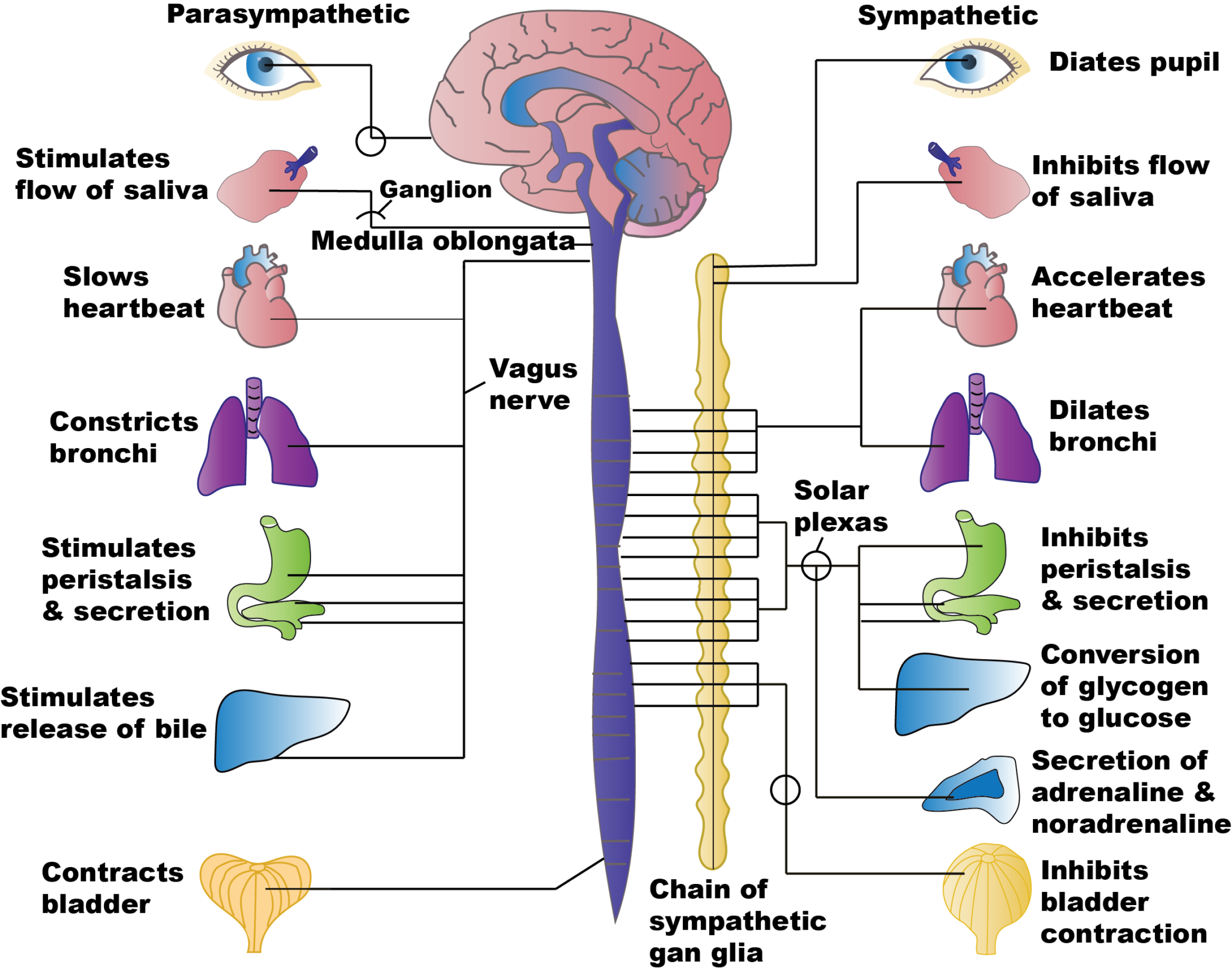
4.2 Autonomic Nervous System Regulation Concepts Nursing Pharmacology
The nerves in the rest of your body make up your peripheral nervous system. Everything your body does is connected in some way to your nervous system. It tells your heart to beat. It tells your.

ICSE Solutions for Class 10 Biology The Nervous System and Sense
The nervous system produces a response on the basis of the stimuli perceived by sensory structures. An obvious response would be the movement of muscles, such as withdrawing a hand from a hot stove, but there are broader uses of the term. The nervous system can cause the contraction of all three types of muscle tissue.

Central Nervous System Karuna Yoga
The brain is an organ of nervous tissue that is responsible for responses, sensation, movement, emotions, communication, thought processing, and memory.. autonomic nervous system functions are lost. Cerebrovascular Accidents: Cerebrovascular accidents, also known as strokes, occur when the brain is not able to get oxygenated blood. The lack.
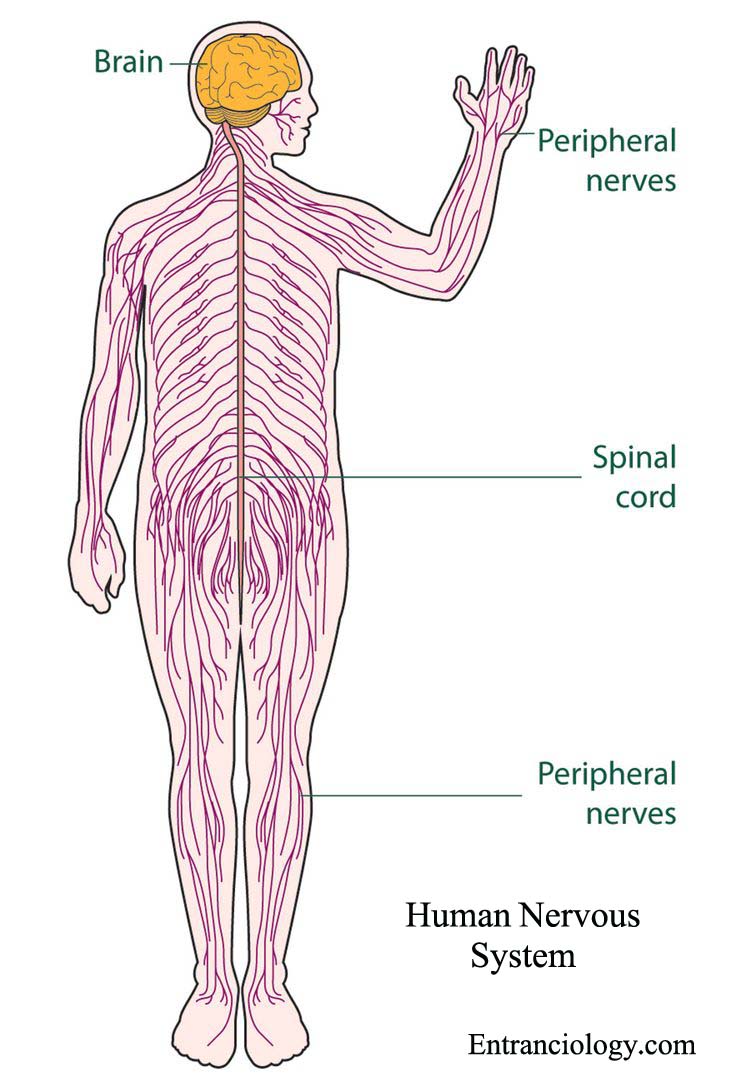
What is Human Nervous System ? Structure and Functions Human
The nervous system has two main parts: The central nervous system is made up of the brain and spinal cord. The peripheral nervous system is made up of nerves that branch off from the spinal cord and extend to all parts of the body. The nervous system transmits signals between the brain and the rest of the body, including internal organs. In this way, the nervous system's activity controls.
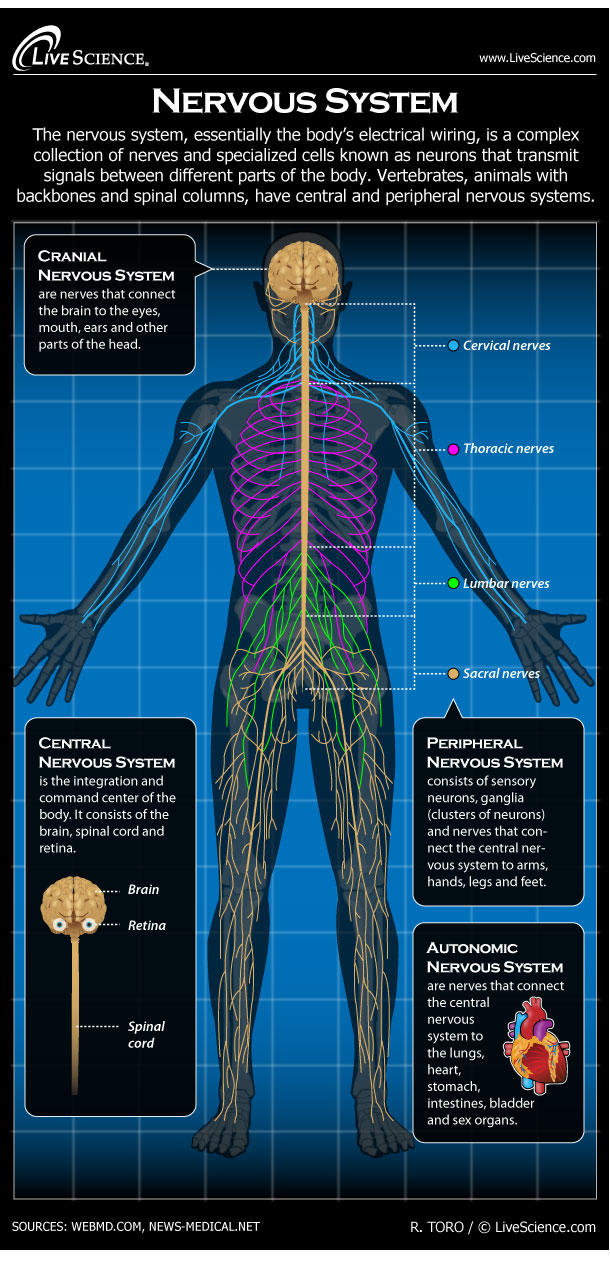
Human Nervous System Diagram How It Works Live Science
The three main functions of your central nervous system are to: Receive sensory information. Process the information it receives (integration). Respond with motor output. After your brain gets and understands the data collected by your sensory neurons (nerve cells), it sends an electrical signal through your spinal cord to your muscles and.
Nervous System The Partnership in Education
The central nervous system is made up of the brain and spinal cord. It gathers information from all over the body and coordinates activity. We explore the types of cells involved, the regions of.

The Nervous System An Introduction Mariska Odendaal Physiotherapy
The nervous system has two major parts: the central nervous system (CNS) and the peripheral nervous system (PNS). The central system is the primary command center for the body, and is comprised of.
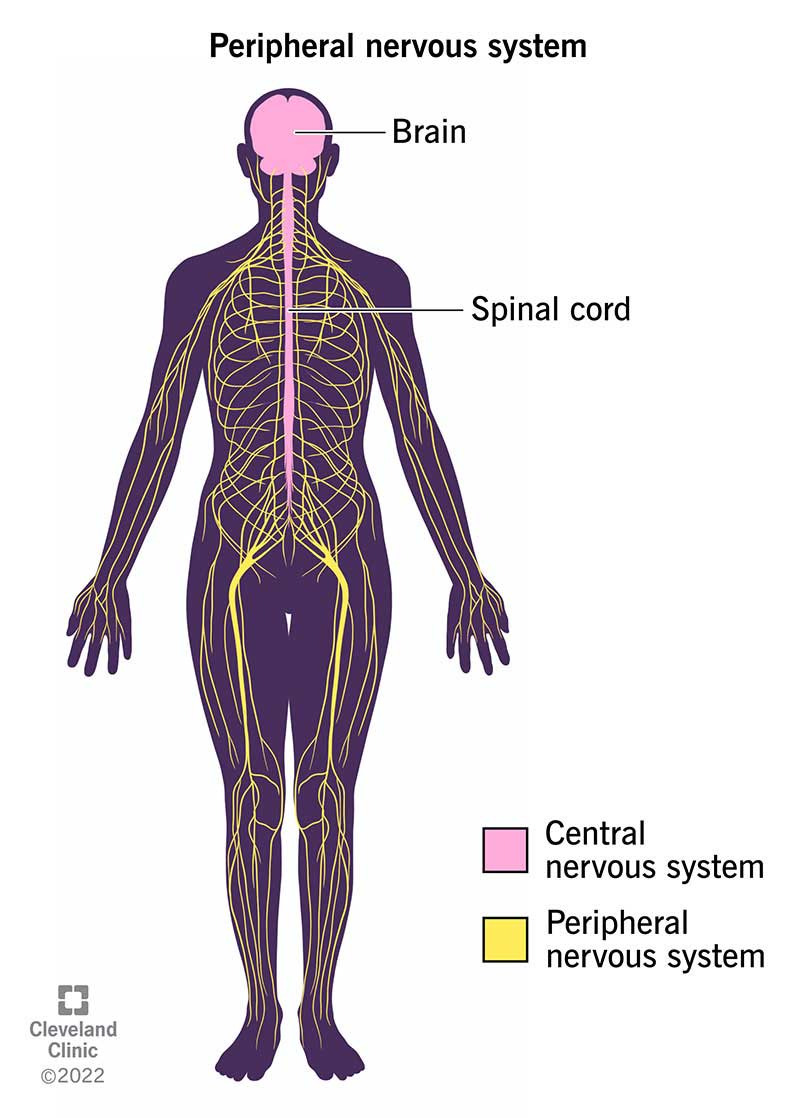
Peripheral Nervous System (PNS) What It Is & Function
The nervous system is really complicated, but it can be divided into two really general parts. One is the Central Nervous System (or CNS). The CNS consists of your brain and spinal cord. The brain and spinal cord are inside your skull and vertebrae (the vertebrae make up your backbone). These bones protect the CNS when you get into accidents.
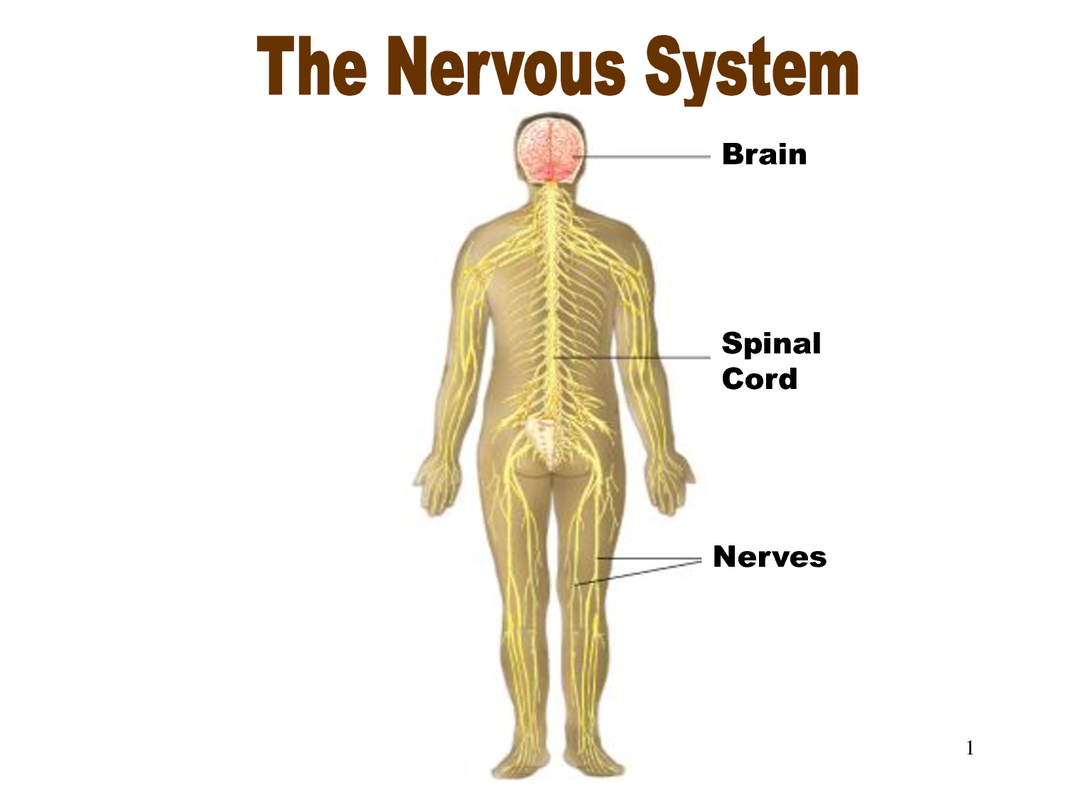
Nervous System the Human Body SystemsBy Jillian Nelson
The nervous system produces a response in effector organs (such as muscles or glands) due to the sensory stimuli. The motor ( efferent) branch of the PNS carries signals away from the CNS to the effector organs. When the effector organ is a skeletal muscle, the neuron carrying the information is called a somatic motor neuron; when the effector.
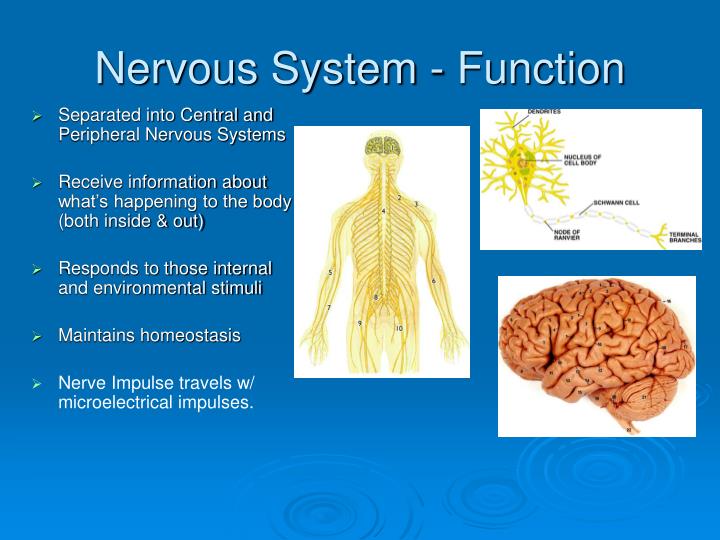
PPT The Nervous System PowerPoint Presentation ID5280700
Table 11.2.1 11.2. 1: Name of structures depend on the location. A group of neuron cell bodies within the gray matter is called a nucleus in the CNS and a ganglion in the PNS. A bundle of axon within the white matter is called a tract or column in the CNS, and a nerve or nerve fiber in the PNS. CNS.
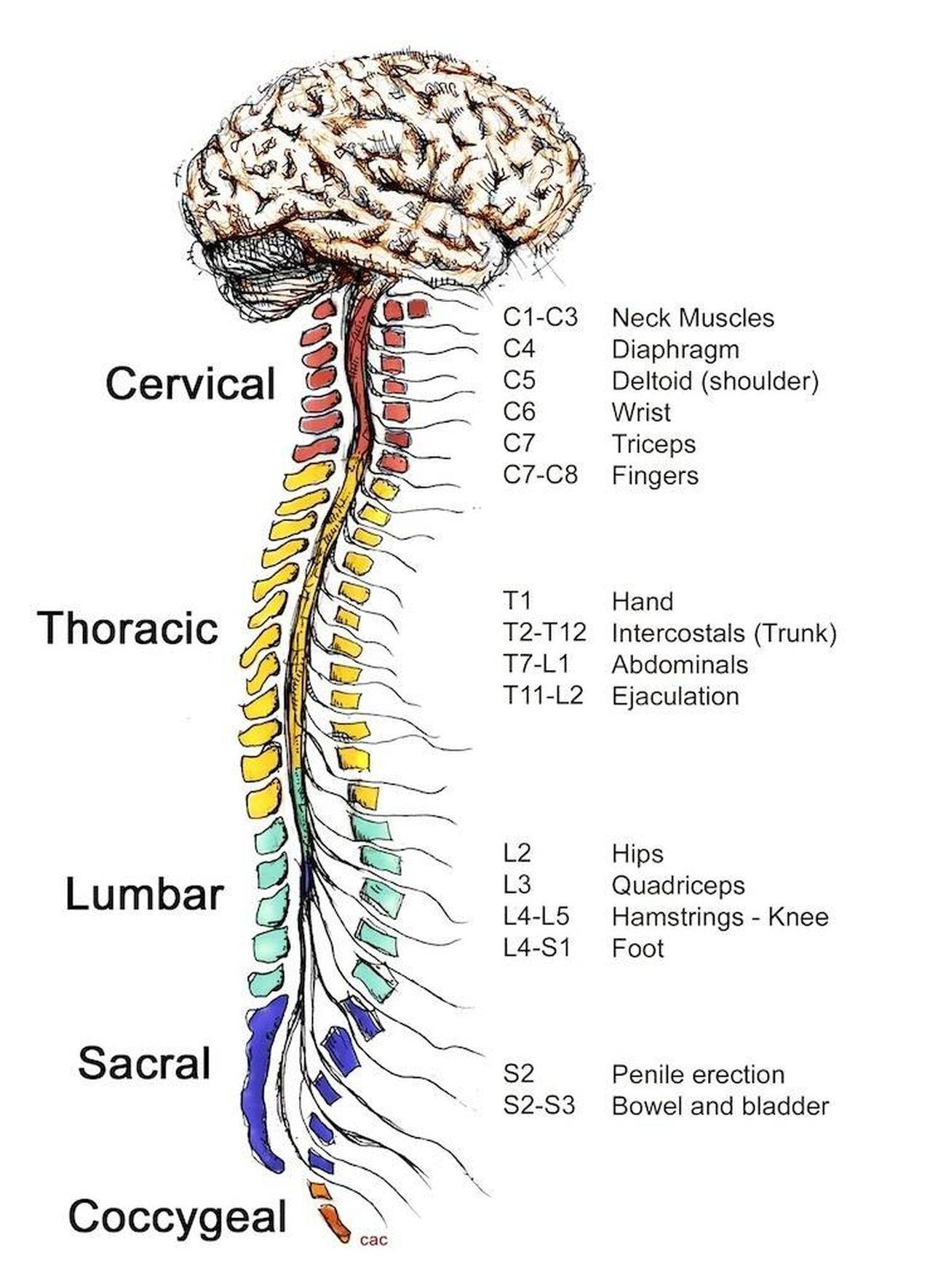
Pictures Of Central Nervous System
The nervous system can be divided into two major regions: the central and peripheral nervous systems. The central nervous system (CNS) is the brain and spinal cord, and the peripheral nervous system (PNS) is everything else (Figure 12.1.1 12.1. 1 ). The brain is contained within the cranial cavity of the skull, and the spinal cord is contained.

Peripheral nervous system parts, divisions & peripheral nervous system
Nervous tissue, present in both the CNS and PNS, contains two basic types of cells: neurons and glial cells. A glial cell is one of a variety of cells that provide a framework of tissue that supports the neurons and their activities. The neuron is the more functionally important of the two, in terms of the communicative function of the nervous system.
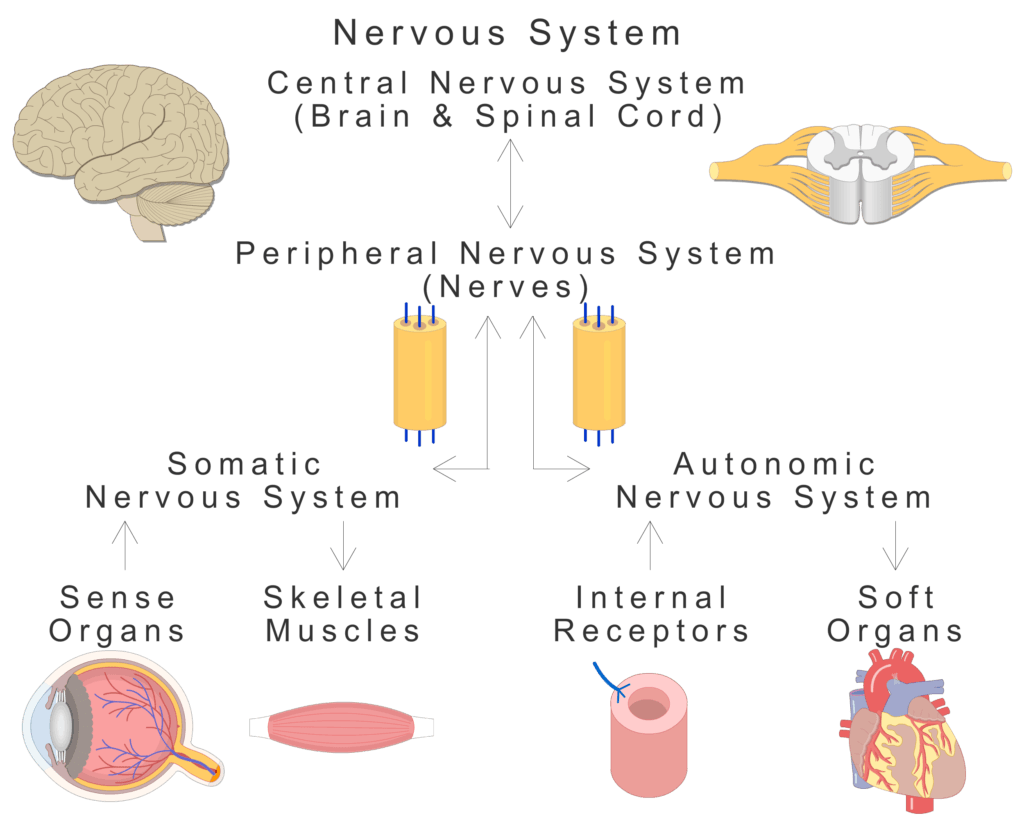
Major Organs and Divisions of the Nervous System GetBodySmart
Nervous system diagram. Functionally, the organs of the nervous system can be further divided into different parts. For instance, the brain is situated within the cranial cavity and weighs less than 1.5 kgs. However, it is the seat for many higher-order mental functions, such as planning, consciousness, perception, and language.

Human Body Nervous System 517421444691102261 Human
The human nervous system functions as the control center for everything our body does. It controls voluntary and involuntary activities, including movements, breathing, thinking, digestion, etc. The nervous system consists of the central nervous system, which is made up of the brain and spinal cord; and the peripheral nervous system, which includes all the nerves that connect the central.
- 1 Eso English Exercises Pdf
- Vasos De Vidrio Con Logo
- Arppe 2664017008 Jersey Long Galgo Gris
- Cuantos Km Puedes Recorrer Con El Deposito Lleno
- Ejercicios 3 Meses Despues Del Parto
- Speedtouch 121g Wireless Usb Adapter
- Copa Del Mundo Baloncesto Sub 19
- Como Atacar Defensa 5 1 En Balonmano
- Almacenamiento Externo Para Raspberry Pit 3
- Alimentos Para Una Nutricion Sana Y Equilibrada